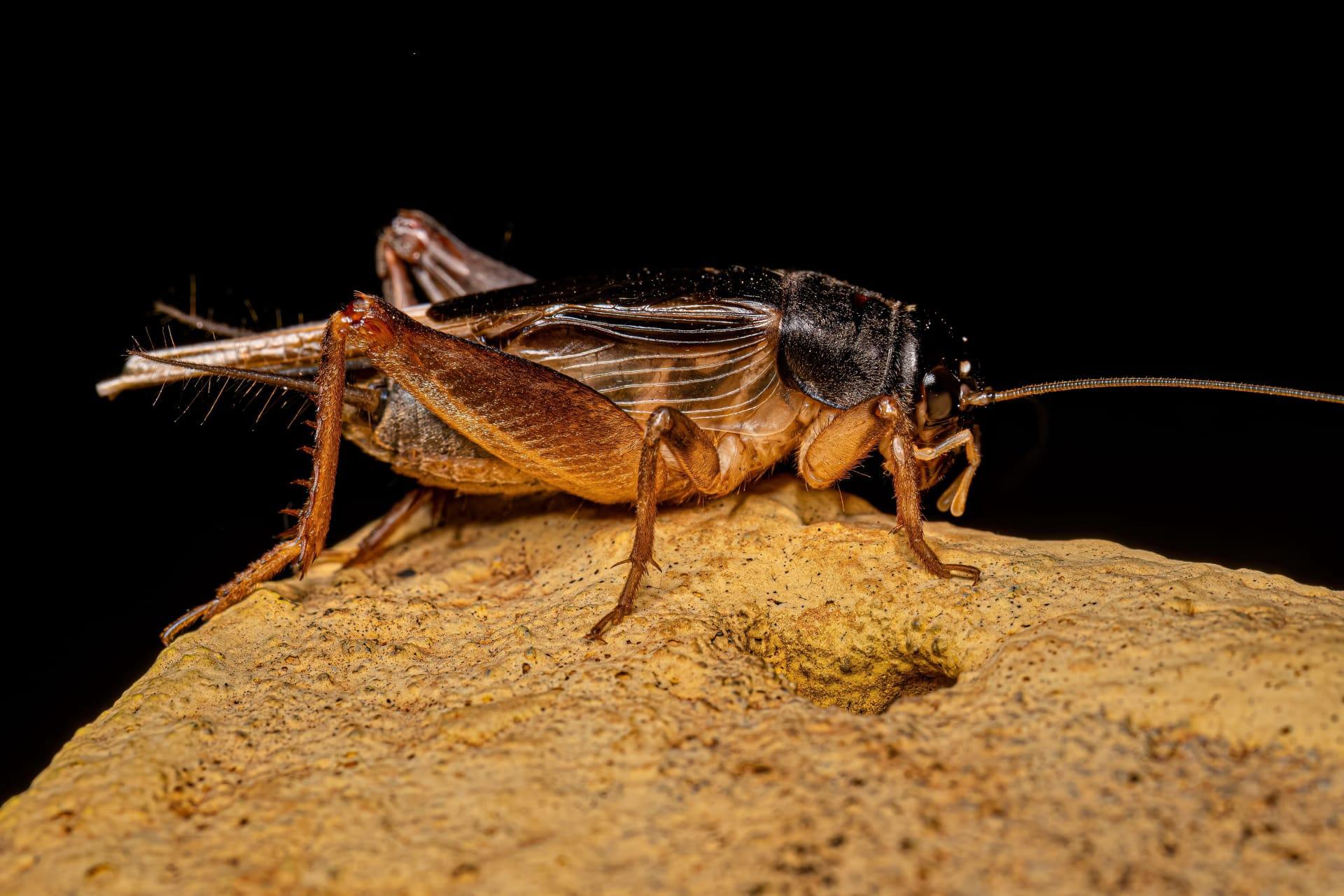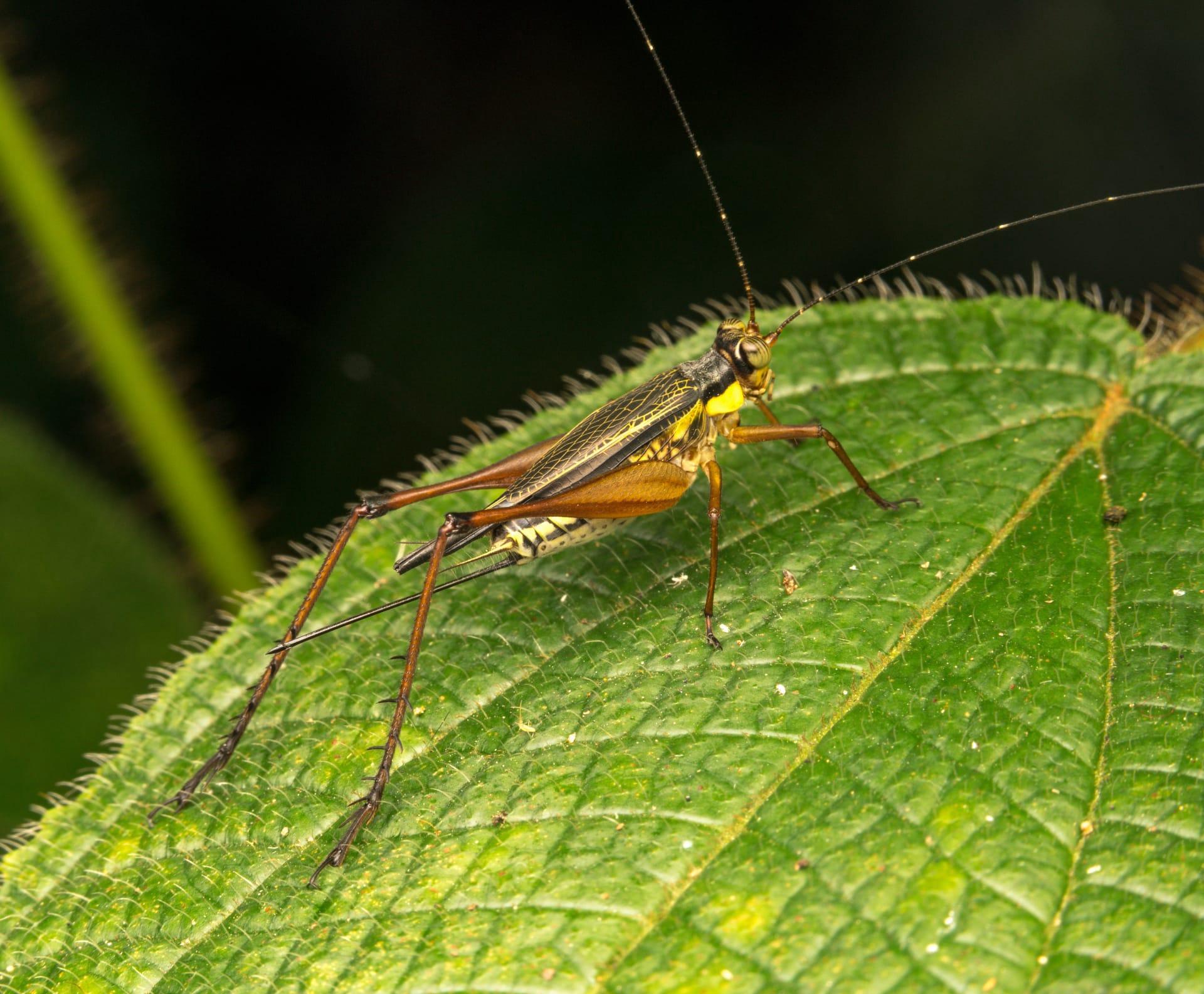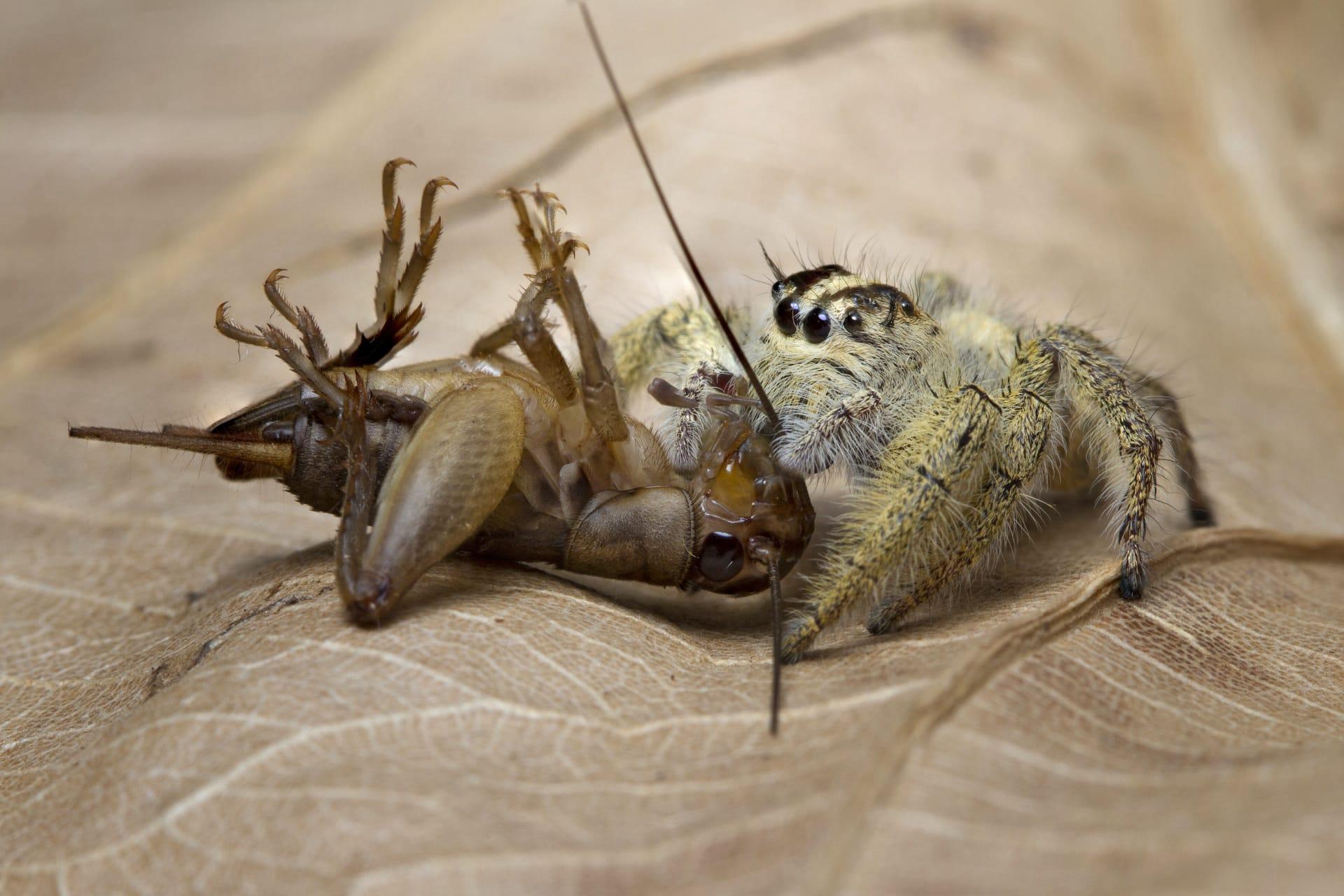Crickets
- Home /
- Mini Encyclopedia /
- Animal /
- Crickets
1
Crickets, known scientifically as Gryllidae, are a family within the order Orthoptera, closely related to grasshoppers and katydids. This family encompasses over 2,400 species grouped into around 100 genera. Crickets are distinguished by their long antennae, robust bodies, and hind legs adapted for jumping. Unique among insects, crickets possess flat, drum-like organs called tympana, used for hearing. The male cricket's song, produced by rubbing their wings together, is a signature characteristic, varying in rhythm and pitch across species.
These chirping insects are found worldwide, with the highest diversity in tropical regions. They inhabit various environments, from grasslands, forests, beaches, and caves to urban areas like gardens and buildings. While most cricket species prefer ground-level habitats, some, like the tree cricket, are arboreal. Certain cave-dwelling species have adapted to life in complete darkness, losing their pigmentation and sight. Crickets' global distribution and adaptability make them a common feature in many ecosystems.

2
Question: Do crickets chirp with their legs?
Answer: Contrary to a common misconception, crickets do not produce their characteristic chirping sound by rubbing their legs together. Instead, this sound, known as stridulation, is created when they rub a series of ridges on one wing (the scraper) against a comb-like structure on the other wing. The frequency and pattern of these chirps vary and are used for attracting mates, signaling danger, and territorial displays. The pitch of the cricket's chirp can also change with temperature, making cricket chirps a rough thermometer in some cultures.

3
Crickets employ various survival strategies. One key method is their nocturnal lifestyle, avoiding many daytime predators. Their brown or green coloring provides excellent camouflage in natural habitats, aiding in avoiding detection. Crickets are also known for their remarkable jumping ability, a primary defense mechanism against threats. They can leap distances over 50 times their body length.
Another survival tactic is their reproductive strategy. Female crickets lay hundreds of eggs, ensuring a high probability of offspring survival. They exhibit maternal care, selecting suitable locations for egg-laying, often in damp, nutrient-rich soil. Some species also display aggressive territorial behavior, with males using their chirps to ward off rivals and attract females, thereby securing their breeding territory and enhancing their chances of reproduction.

4
In ecosystems, crickets play a multifaceted role. As omnivores, they feed on organic materials, including plants, fungi, and occasionally small insects. This diet makes them important for nutrient cycling, aiding in the decomposition process and soil health. Their feeding habits also contribute to seed dispersal and plant health.
Crickets also serve as a crucial food source for various predators, including birds, reptiles, amphibians, mammals, and even other insects. Their role in the food web underscores their ecological importance. Predation on crickets helps regulate their population, maintaining ecological balance. Moreover, cricket singing contributes to the natural soundscape, playing a role in acoustic ecology and indicating the health of their habitat.

5
Film: "The Song of the Cricket" is a documentary produced in the United States in 2017. This film explores the unique world of crickets, delving into their behavior, lifecycle, and the fascinating science behind their melodious chirping. It showcases how crickets have adapted to different environments and the impact of these adaptations on their survival.
Book: "Cricketology" by David Rothenberg, published in the United States in 2015, explores the intriguing world of crickets. Rothenberg, known for his work on the relationship between nature and music, delves into the cricket's song, its significance in various cultures, and its role in the natural world.
Book: "Insect Chorus: The Cricket's Tale" by Jennifer Ackerman, released in 2019 in the UK, offers a comprehensive look at crickets. Ackerman, a renowned science writer, provides insights into cricket behavior, their ecological importance, and the role they play in scientific research, blending scientific facts with engaging narrative.